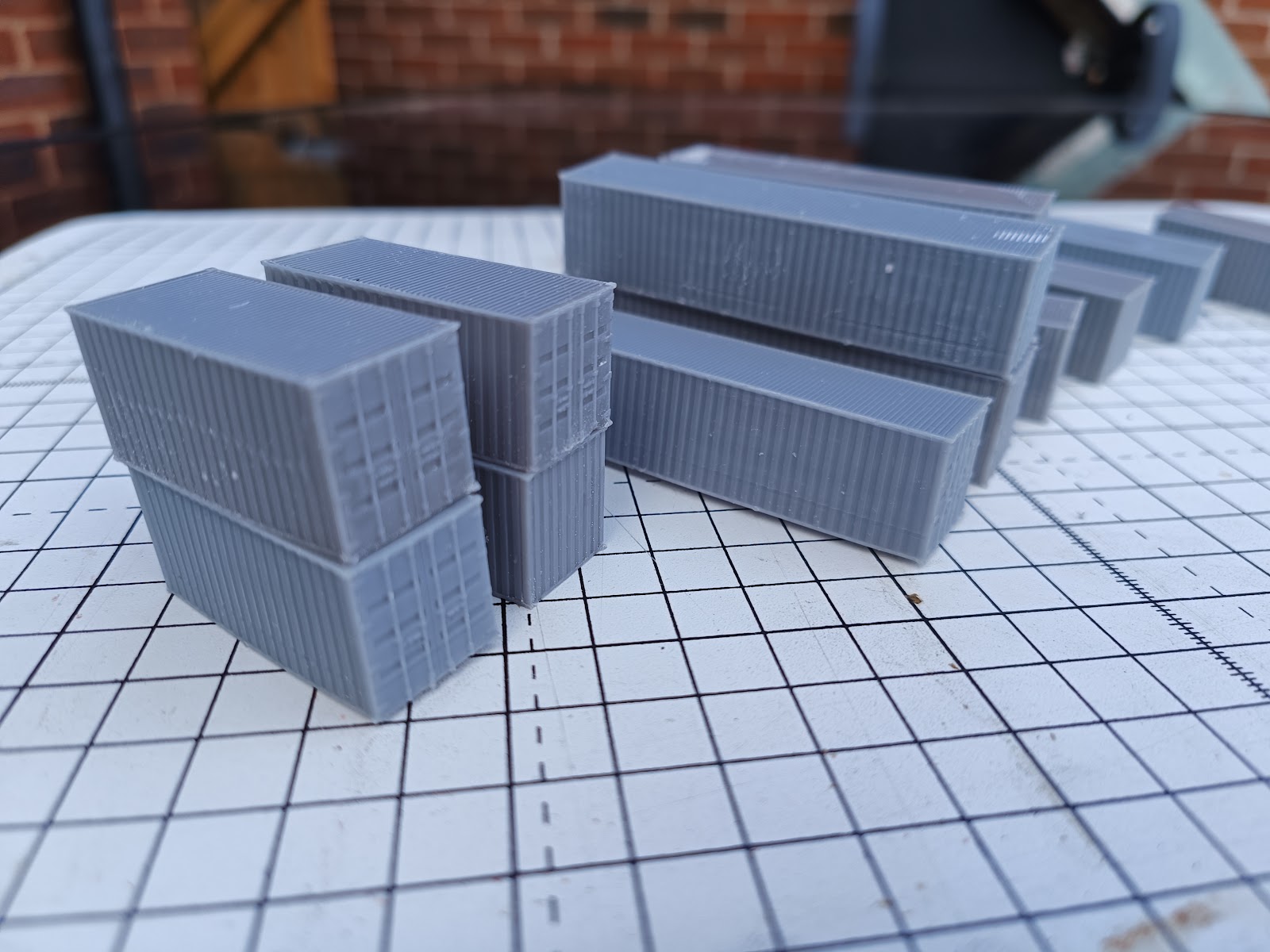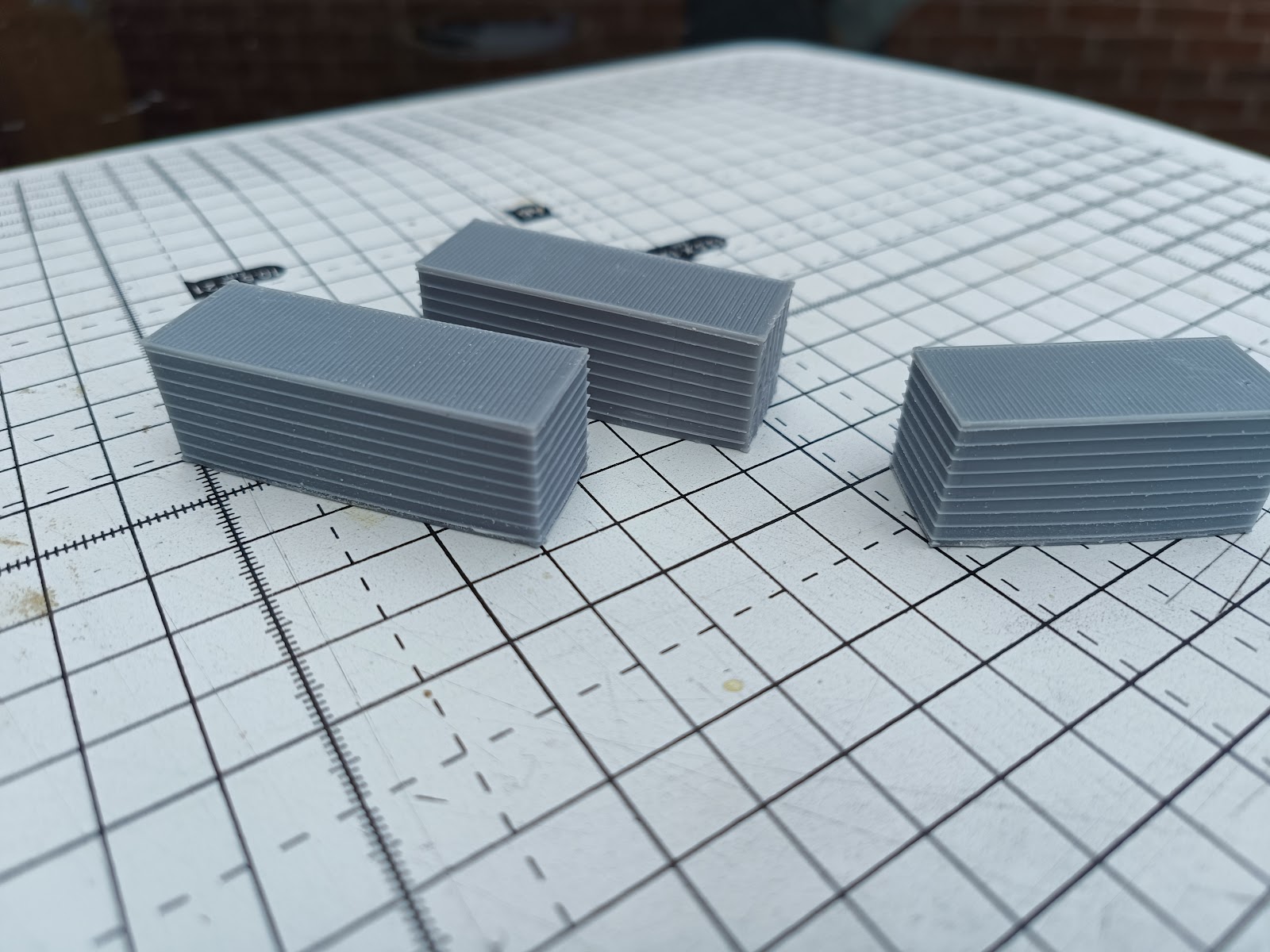Containers
Shipping containers became a popular means to ship goods in the sixties, and have only become more popular since. British Rail introduced its own variant, Freightliner, in the mid-sixties, pioneered by Dr Beeching, better known for closing railways. It was originally envisaged as a domestic solution, however it was international trade where is took off.
An international standard, ISO-668, appeared in 1968, based at least in part on the UK standard, though not quite identical to it, and this slowly replaced the UK version.
Early international shipping containers were a variety of designs, but all the same width and height, and either 20', 30' or 40' long. Today the design has standardised on the corrugated sides, and 30' containers are rare, but there is some variation in height - which is a problem in the UK as many routes are not suitable for the higher containers.
The old UK shipping contains seem to have varied rather more, including 10' containers and 27' containers (lorries were limited to 27').
I have created a number of styles, which I have given my own names to.
Corrugated
Vertical ribbed
Smooth ends
Horizontal ribbbed
Tanktainers are used for both gases and liquids, and possibly dry powders too. They have been around since the late sixties, originally under the trade name Isotank. I suspect they were fairly rare, despite originating in the UK.
References
Good images here:And a couple of videos here:
https://www.rmweb.co.uk/topic/83169-early-intermodal-operations/#comment-1436049









Comments
Post a Comment